#Tananarive Due
Text
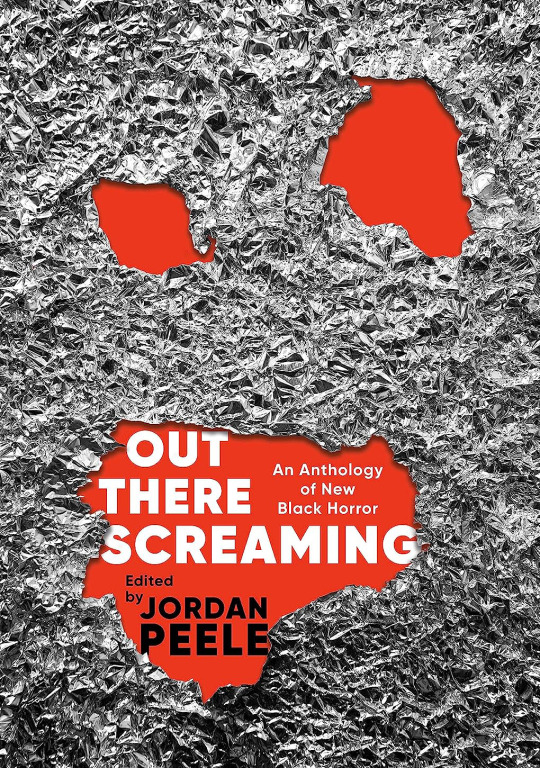
Out There Screaming: An Anthology of New Black Horror will be published on October 3 via Random House. It's curated by filmmaker Jordan Peele, who also provides an introduction and serves as editor with John Joseph Adams.
It features short stories by Erin E. Adams, Violet Allen, Lesley Nneka Arimah, Maurice Broaddus, Chesya Burke, P. Djèlí Clark, Ezra Claytan Daniels, Tananarive Due, Nalo Hopkinson, N.K. Jemisin, Justin C. Key, L.D. Lewis, Nnedi Okorafor, Tochi Onyebuchi, Rebecca Roanhorse, Nicole D. Sconiers, Rion Amilcar Scott, Terence Taylor, and Cadwell Turnbull.
The 400-page book will be available in hardcover, e-book, and audio book. The synopsis is below.
The visionary writer and director of Get Out, Us, and Nope, and founder of Monkeypaw Productions, curates this groundbreaking anthology of all-new stories of Black horror, exploring not only the terrors of the supernatural but the chilling reality of injustice that haunts our nation.
A cop begins seeing huge, blinking eyes where the headlights of cars should be that tell him who to pull over. Two freedom riders take a bus ride that leaves them stranded on a lonely road in Alabama where several unsettling somethings await them. A young girl dives into the depths of the Earth in search of the demon that killed her parents.
These are just a few of the worlds of Out There Screaming, Jordan Peele’s anthology of all-new horror stories by Black writers. Featuring an introduction by Peele and an all-star roster of beloved writers and new voices, Out There Screaming is a master class in horror, and—like his spine-chilling films—its stories prey on everything we think we know about our world... and redefine what it means to be afraid.
Pre-order Out There Screaming.
#jordan peele#horror books#horror anthology#get out#nope#us#black horror#monkeypaw productions#random house#book#gift#horror book#tananarive due#nalo hopkinson#tochi onyebuchi#rebecca roanhorse
3K notes
·
View notes
Text

I wanted to share this cool picture I found in the ebook version of Dawn, at the end of the book.
"Butler with authors Tananarive Due, Jewelle Gomez (standing), Samuel R. Delany, and Steven Barnes (sitting) at Clark Atlanta University’s conference for African American science fiction writers—the first of its kind—in 1997."
instagram.com/tananarivedue
instagram.com/vampyrevamp
------
I love this picture of Octavia Butler with fellow Black Sci Fi writers in 1997! (I turned 7 years old that year) I wish I was older at the time so I could have been there 😊 It would have been amazing to see these five in the 90s, just writing sci fi and making a way for future Black sci fi writers.
So much talent in one image, wow.
237 notes
·
View notes
Video

Harvey was a guest on Interview with the Vampire’s aftershow, Obsessed with the Vampire, hosted by Cameron Esposito! He was joined by fellow guests Cassandra Peterson/Elvira, David Dastmalchian, Tananarive Due, and Maura Athari.
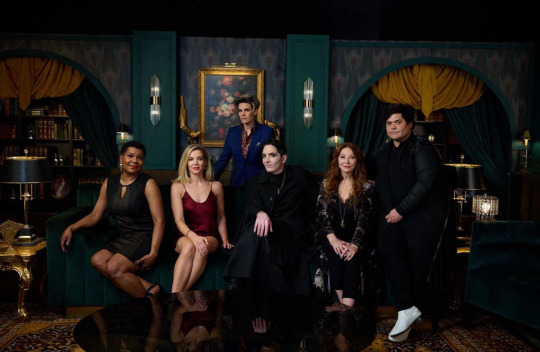
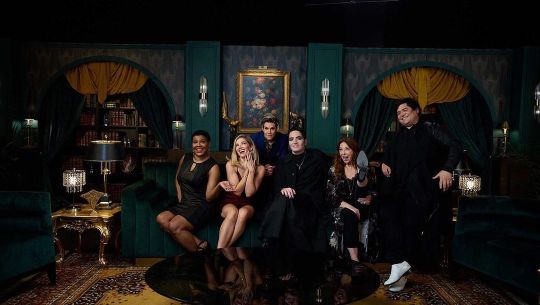

#harvey guillén#harvey guillen#interview with the vampire#iwtv#cameron esposito#elvira#cassandra peterson#david dastmalchian#tananarive due#maura athari#november 2022
318 notes
·
View notes
Text

Tatiana Maslany
via Steven Barnes on Facebook
#Tatiana Maslany#Tananarive Due#Steven Barnes#Orphan Black#Clone Club#The Monkey#She Hulk#She Hulk Attorney at Law#Jennifer Walters#Marvel Cast#MCU Cast#MCU
14 notes
·
View notes
Text
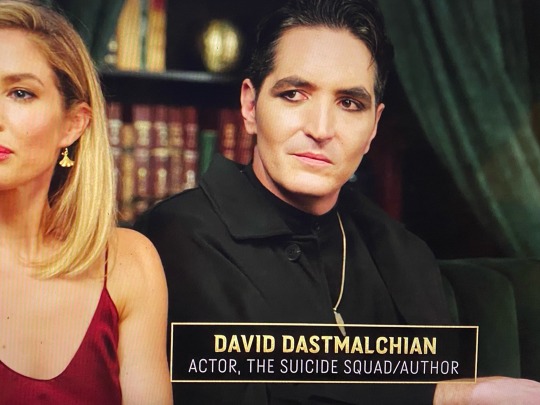


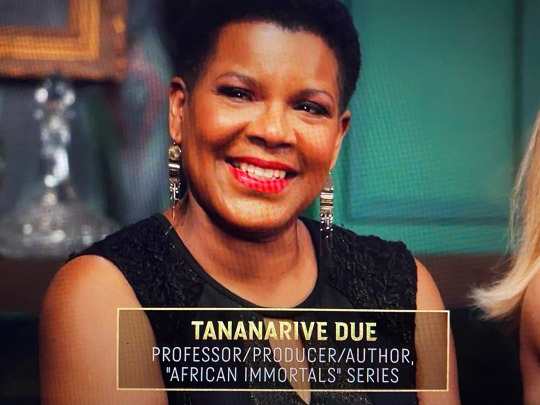
Whoever put together this panel for the finale needs to get a promotion
203 notes
·
View notes
Text
Symbolism in Get Out
In Get Out (2017) we find a multitude of symbols which allude to historical references within ideas of slavery, the Old South, and Jim Crow. First off, we see a parallel drawn between Chris and the buck. Historically, Black men were labeled as “bucks” which was a stereotype assigned to “aggressive” Black men who refused to bend to white society. We see this idea of “aggression” assigned to Chris by Jeremy, who takes an interest in his “physique” and thus must challenge him in the art of strength. I think the relationship between these two characters is interesting because Jeremy, in categorizing Chris as a “buck” underestimates his true ability to outsmart him.

As we see with the bingo scene, Chris is quite literally put on auction, with party-goers feeling him up and demeaning him with micro-aggressions such as “Black is in”, and “Is it true? Is it better?”. The film uses these types of microaggressions and expands them into a scope under which we may view them as horrific, putting casual and covert racism under a lens by which we would be more likely to feel on edge. With that in mind, I like to say that Get Out is an inside joke within the Black community, as we already fear and analyze these types of interactions. It is white audiences that might turn a blind eye to them, and white audiences who would be coming to these revelations of horror.
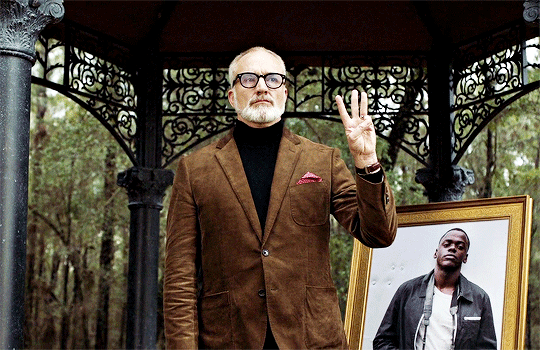
Furthermore, on the topic of “turning a blind eye” we arrive upon ideas of “colorblindness” with the blind art dealer. The art dealer, despite participating in a racist system, absolves all responsibility from himself as he is literally colorblind. It is reminiscent of real instances of gaslighting wherein the concept of “colorblindness” somehow absolves an individual of all aggressions, privilege, and intention.

In the beginning and end of the film, the song “Sikiliza Kwa Wahenga” plays. The song plays into the entire plot of the film, playing as an ancestral warning for Chris to “get out”.
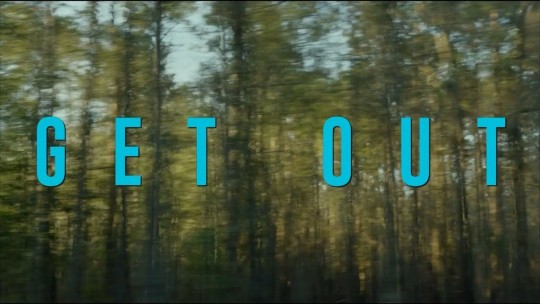
You have ideas of slavery represented in Chris’s escape scene, as he scratches the leather chair and plucks out cotton to block out hypnosis. This action, while having saved his life in the long run, is reminiscent of the literal action of picking cotton.
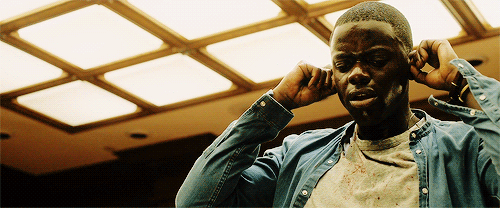
On the topic of slavery, the sunken place itself is a form of psychological enslavement wherein the white parasite uses the Black body for their own enjoyment and benefit, while the Black host is forced to watch as their body is abused, raped, and taken away from them.
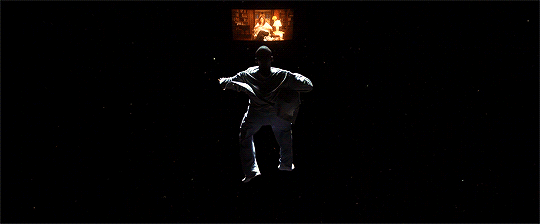
#get out#get out 2017#horror#black horror#horror films#black horror films#tananarive due#afrofuturism
131 notes
·
View notes
Text
Have you read...
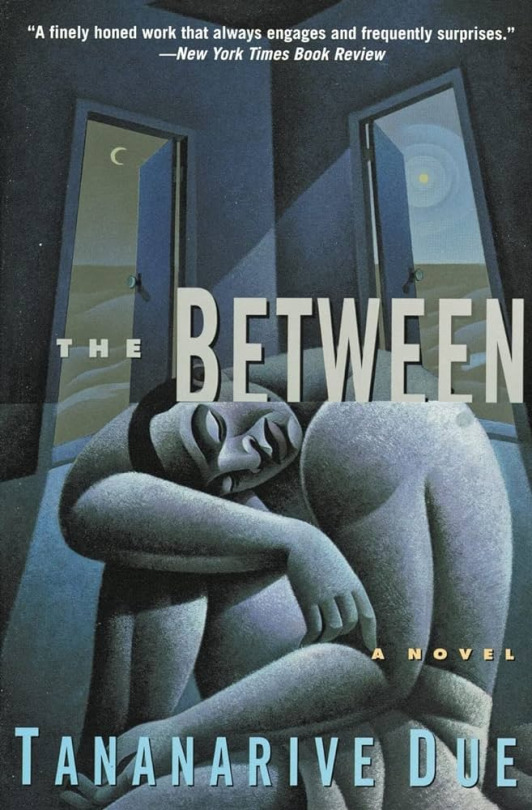
When Hilton was just a boy, his aged grandmother saved him from drowning by pulling him out of a treacherous ocean current, sacrificing her life for his. Now, thirty years later, Hilton begins to think his borrowed time is running out. His wife, the only elected African–American judge in Dade County, Florida, has begun receiving racist hate mail from a man she once prosecuted, and Hilton's sleep is plagued by nightmares more horrible than any he has ever experienced.
As he battles both the psychotic stalking of his family and the unseen enemy that haunts his sleep, Hilton's sense of reality is slipping away.
submit a horror book!
#The Between#Tananarive Due#horror books#horrorbookpoll#horror#bookblr#books#thriller books#fantasy horror#black horror#black literature
5 notes
·
View notes
Text
She could have told him that you can only trust explosive secrets or plans with three people at most. Maybe four. Beyond that, loyalties tended to buckle beneath the thrill of the telling.
from The Reformatory, by Tananarive Due
4 notes
·
View notes
Text
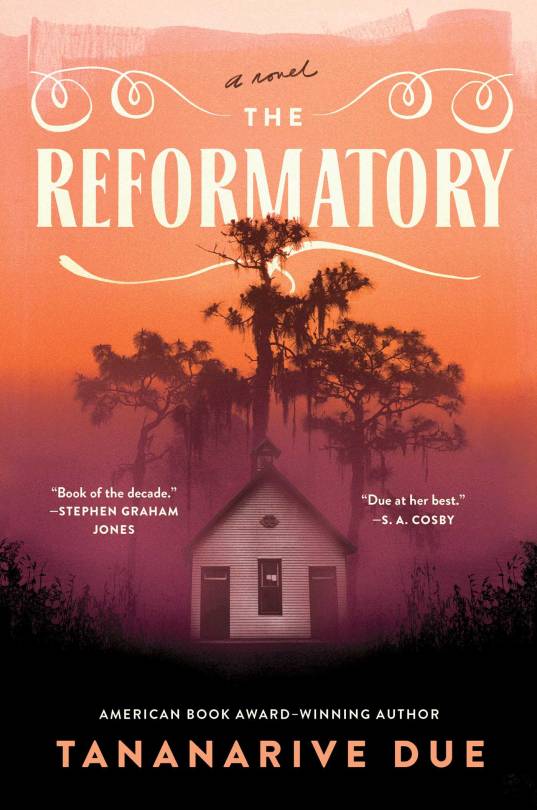
Title: The Reformatory
Author: Tananarive Due
Genre/s: historical, horror
Content/Trigger Warnings: historically accurate depictions of racism and prejudice in the Jim Crow South, including implicit references to rape, lynching, and slavery, and explicit depictions of segregation and harassment; historically accurate depictions of the treatment of the boys sent to reform schools like the Dozier School for Boys; antisemitism; homophobia
Summary (from publisher's website): Gracetown, Florida
June 1950
Twelve-year-old Robbie Stephens, Jr., is sentenced to six months at the Gracetown School for Boys, a reformatory, for kicking the son of the largest landowner in town in defense of his older sister, Gloria. So begins Robbie’s journey further into the terrors of the Jim Crow South and the very real horror of the school they call The Reformatory.
Robbie has a talent for seeing ghosts, or haints. But what was once a comfort to him after the loss of his mother has become a window to the truth of what happens at the reformatory. Boys forced to work to remediate their so-called crimes have gone missing, but the haints Robbie sees hint at worse things. Through his friends Redbone and Blue, Robbie is learning not just the rules but how to survive. Meanwhile, Gloria is rallying every family member and connection in Florida to find a way to get Robbie out before it’s too late.
The Reformatory is a haunting work of historical fiction written as only American Book Award–winning author Tananarive Due could, by piecing together the life of the relative her family never spoke of and bringing his tragedy and those of so many others at the infamous Dozier School for Boys to the light in this riveting novel.
Buy Here: https://bookshop.org/p/books/the-reformatory/18860170
Spoiler-Free Review: I think it wasn't a good idea to follow up Kiesling's Mobility with this one, because Mobility made me angry, but this one made me angry AND sad and terrified. Despite that though it's still SO VERY GOOD.
This novel follows in the pattern I’ve seen a lot of BIPOC horror writers go: to show the horror and monstrosity of the real-world systemic problem of racism. But what Due does here is to laser-focus on the atrocities committed in institutions like the Dozier School for Boys in Florida, which is the main inspiration for the titular Reformatory in this book, as well as on life in the Jim Crow South, using Gracetown as a kind of microcosm of the wider milieu at the time the story is set.
While the history itself is very interesting, and the references Due provides at the end of the novel are going into my TBR list for future reading, it’s the characters that really pulled me into this. The protagonists, Robbie and Gloria, are the lynchpins around which this entire story hinges and they are absolutely stellar. Robbie is an excellent portrayal of a twelve-year-old boy caught in up in unjust and dangerous circumstances, trying to do his best to survive. He doesn’t always make smart decisions, but he’s just twelve after all: something which is both heartbreaking and frightening given where he is for most of the novel.
I’m most drawn to his older sister, Gloria. She’s entirely, heartbreakingly human: constantly drifting between anger, blame, and guilt, but always, ALWAYS trying to do what’s best for her family and for her community. Like her brother, she doesn’t always make the best decisions, but then again she’s just a teenager herself, forced to give up so much of her own dreams and aspirations in order to take care of her family. She gives “Eldest Asian Daughter” vibes, though I guess that should more accurately be “Eldest BIPOC Daughter” vibes, given how familiar Gloria’s situation will be to more POC than just Asians.
I’m also delighted by the other characters around the protagonists. Miz Lottie is a personal favorite of mine, partially because of her maternal nature, but also because of her inner strength of will, which is rooted in her backstory. Said backstory isn’t told in explicit detail, but there’s plenty of information in the book (and hopefully in the reader’s own knowledge of history) to give a pretty good picture of what said backstory is, without the author having to show it. The same goes for June and Waymon, and Gloria and Robert’s father: their stories tell facets of African-American history that are never explicitly discussed, but anyone with a good grasp of history ought to be able to pick them up just fine.
As for the other characters, both white and Black, well… Not all of them are as villainous as the novel’s main antagonist (who is TRULY a piece of work in an utterly nightmarish - and historically accurate - way), but it becomes so easy to see why Gracetown and the Reformatory are as bad as they are. Their reluctance to fight back against the system is, sometimes, not their fault, as they, too, are trapped by the system in some way (because they’re a woman, or they’re Jewish, or are probably gay, or trans), but sometimes their reluctance is borne of how they hinge so much of their lives on “respectability” and their own personal comfort that they cannot actually DO anything progressive. It’s not a particularly obvious thread in the novel, but Due certainly doesn’t hesitate to point out that respectability never got anyone anywhere when those one is opposing don’t follow the same rules about respectability as oneself does.
But what I think this book does best is also the thing it is the least subtle about: that the real horror is the systemic history of racism and slavery in the United States, a history that the country still refuses to acknowledge and deal with upfront, and instead keeps trying to silence and bury. The ghosts are spooky, sure, and there were moments when I had to go “Noooope!” and put the book away despite deliberately choosing to read it in daylight, but the real monster here is the very, VERY deep vein of racism that ran and continues to run through American society. The details as Due describes them are rooted in history; she explains in her Author’s Note at the end of the book the kind of research she undertook to get those details right. What’s saddening (and terrifying) is that she didn’t have to look very far to find first-hand witnesses to those atrocities described in the book. It’s easy to forget that lynching was still popular in the 1950s, a scant 70-odd years ago, and that many of the people who took part in the Civil Rights Movement in the 1960s-1970s are still alive today.
Overall, this novel is a very scary, utterly nightmarish read - and not necessarily because of the ghosts. In fact, in some ways the ghosts are the least scary part of it. The scariest part is the history that Due uses as the groundwork for this novel - and the realization that we are still haunted by that history in the present day.
Rating: five freed haints
2 notes
·
View notes
Text
WHAT I JUST SAW
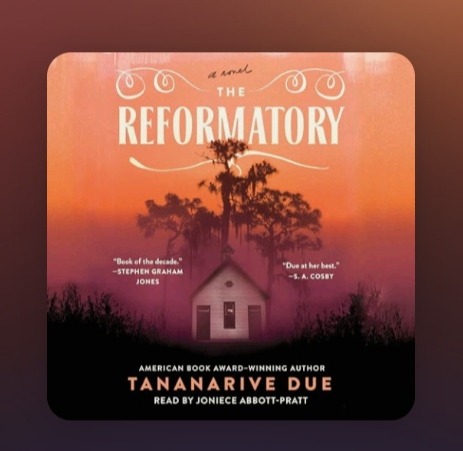
It's literally gonna drop ON Halloween fckkkkkkk meeeeeee🤩🤩🤩🤩
#THE GOOD STUFF#october boy do i love you#tananarive due#the reformatory#come on come on come to mommaaaaa🤩#books#horror#black authors#audiobooks
3 notes
·
View notes
Text
lmao this demon is funky. he’s got fathers killing their sons, men killing themselves, and a teenager committing suicide with a gun that magically flew over from chicago. i know marie toussaint was just tryna help when she exorcised that demon, but what i wanna know is, how tf it get to washington state in the first place. and why is it killin the men. what they ancestors do 💀💀💀
3 notes
·
View notes
Text
youtube
Cameron Esposito sits down with Harvey Guillén, David Dasmalchian, Cassandra Peterson, and Tananarive Due to talk about Interview With The Vampire, it’s queerness, Anne Rice, and more
#interview with the vampire#iwtv#harvey guillen#david dastmalchian#cassandra peterson#tananarive due#cameron esposito
19 notes
·
View notes
Text
Nope and the Making of the Spectacle
In this short post, I hope to break down the making of spectacle in the film, Nope (2022).
The film, first off, is a subversion of the Western genre. It operates on an aspect ratio ranging from 1.33:1 to 2.20:1, following the traditional widescreen model of the Western which values the spectacle of landscape, the Wild Wild West. The film relies on the widescreen to showcase key horror elements, emphasizing vastness, emptiness, and a fear of something bigger than you.

Also important to note is how the film uses darkness to make said landscape more intimidating, which plays on the fear of smallness as opposed to largeness of environment.

This brings me to the topic of eldritch horror, a horror subgenre which Peele explores with Jean Jacket. Eldritch horror is plainly defined as a fear of the uncanny, though, can be expanded to include the fear of the uncanny and one’s realization that they are meaningless in comparison. Jean Jacket, a being which poses itself against all known laws of worldliness, can be described as an eldritch abomination; a spectacle to behold. Commonly with the eldritch abomination, simply looking at it spells death or madness for the witness, which we see in Nope as looking at Jean Jacket (beholding it) means death.

However, something that was interesting is that Peele denotes Jean Jacket to an animal by using animal logic to defeat it. See, Jean Jacket definitely is an iteration of the eldritch abomination, but the plot twist is that Jean Jacket’s existence is much more grounded. This ties in to the overarching theme of the film, which is the reaction of the animal when it has been turned into a spectacle. The film starts off with this quote:
“And I will cast abominable filth upon thee, and make thee vile, and will set thee as a spectacle"
This quote sets up the arcs of both Gordy and Jean Jacket, both in parallel to one another as to what happens when humanity errs too close to the boundaries of control. Gordy, a full grown chimpanzee who is personified/humanized for entertainment, kills the cast of Gordy’s Home as a result of being made into a spectacle (and is thus killed for responding like any animal would to a sudden noise). Jean Jacket refuses to be exploited, and instead eats those who behold it.
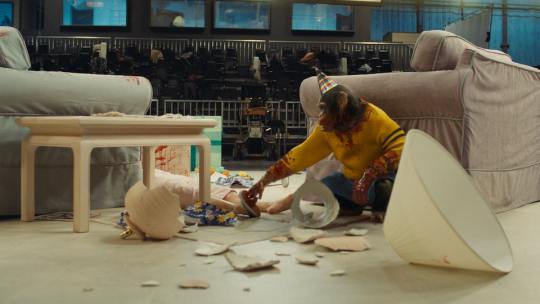
This opens up another point of discussion as to how animals in the entertainment industry are exploited for the simple spectacle of being tamed or “friendly”, thus we have instances like with OJ’s horse “Lucky” wherein the animal’s comfortability is disregarded for the simple fact that it is viewed as a prop.
#nope film#nope 2022#tananarive due#gordy nope#jean jacket#nope spoilers#black horror films#black film#jordan peele
132 notes
·
View notes
Text
Halloween Day 23
"Every inch of the cabin was sagging a hundred years later, weary of standing. The slanted roof had collected a thick blanket of dead leaves at the heart of the L shape that separated the cabin’s main room from its single bedroom. The bathroom her parents had added in the rear in the ’90s wasn’t in great shape, Jesse had warned, but it was better than the outhouse she still saw a few yards beyond the cabin, its wood blackened with age."
Tananarive Due is the one of the greatest living horror and speculative fiction writers. Her African Immortals series sits in the perfect crossroads of the fantastic and the terrifying, and Joplin's Ghost is a chilling favorite of mine.
The Wishing Pool is a story of family and loss and sorrow. As a person of a certain again I find it perfect for a night when the wind works its way through dying leaves and you find yourself trying to remember the faces of those who you have loved and lost.
If you would like to be added to my taglist for the remainder of Halloween or for the sporadic book reviews and recs offered here, please let me know!
@dianamolloy @piggledy-higgledy @imdeadtiredtm @joyfullymassivewhispers @caffiend-queen @dangertoozmanykids101 @toozmanykids @myoxisbroken @wrathkitty @punemy-spotted @sillybillieandricky @stupendouslovegardener @sylviefromneptune @acidcasualties
#31 days of halloween reading#halloween#31 days of halloween#horror#halloween 2023#short stories#tananarive due#black horror writers
2 notes
·
View notes